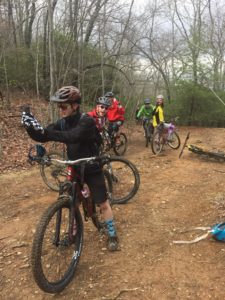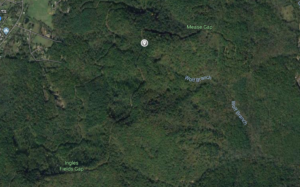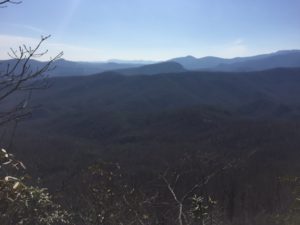I spent my spring break with the UVM cycling team in Brevard, North Carolina. We spent the week riding in various locations across the western half of the state, which gave me the opportunity to immerse myself in a landscape that is rather different from the location I’ve been studying in Vermont.
The place that I chose to look at in more depth was on the Ingles Field Gap trail in the Bent Creek Experimental Forest. The Bent Creek Experimental Forest is an area that was designated in 1927 to study the rehabilitation of degraded, cutover forests. It is the oldest experimental forest east of the Mississipi River. The natural area had been abused and overharvested prior to its governmental establishment, but has since become a valuable research location for the US Forest Service. Now part of the Pisgah National Forest, Bent Creek is a fairly well-preserved ecosystem that is still a valuable asset for contemporary forestry research. Bent Creek is also home to a trail system open to hikers and mountain bikers, which is why I found myself there.
The phenological condition of the Pisgah National Forest is very different from Northern New England. While Vermont was under a barrage of multiple Noreasters, I was at Bent Creek where it was in the mid-40s without much sign of snow. My place was quiet and eerie, perched on a hill with a thick cloud of mist hanging in the air. The forest was ahead of Burlington in the race toward spring, but the deciduous trees in the area still hadn’t popped their buds. The woody vegetation was still in a state of winter dormancy, with heavy frosts still occurring at night at higher elevations. The natural communities present were fairly different from what I am used to. The most notable change was the abundance of Rhododendrons, which was the only green present aside from some scattered conifers. In some places, the Rhododendrons would create a thick corridor around the trails we rode our bikes through, which created a striking and unusual aesthetic. The deciduous trees, barren of leaves, were difficult for me to identify in a foreign environment, but I did notice some oaks and the distinct opposite branching patterns of various maple species. I didn’t see any wildlife in my visit at Bent Creek, likely because the group I was in scared any birds or mammals away on our bikes. The wildlife in the area is probably wary of the heavy presence of people recreating.
The geology of North Carolina was quite interesting to me. I mostly noticed a mix of mineral soils and clay, all of which had a rusty orange tinge. The topography was very mountainous, but the latitude meant that the species present at various elevation gradients were drastically different from those in more northern mountains. The place I studied was probably at around 2500-3000 feet above sea level, but the forest was a mixed hardwood community, but in Vermont, a forest at that elevation would likely be a montane red spruce-yellow birch forest. Even on trails that took us to elevations of 4000 feet, hardwoods were dominant. It was odd to think that we were riding trails that were the same height as Mount Mansfield, yet the forest structure was more similar to the lowlands of Vermont than any kind of northern alpine community.
I had a great week in North Carolina, and I wish I could have spent more time there. My days in Brevard were fast paced and I didn’t get a chance to slow down and deeply immerse myself in the landscape, but still, my trip was a great way to see more parts of the country. Now that I am back in Burlington, it feels like I have gone back in phenological time because of the new blanket of snow that fell over Vermont in my absence. The longer days and higher sun, however, suggest that spring is just around the corner.




